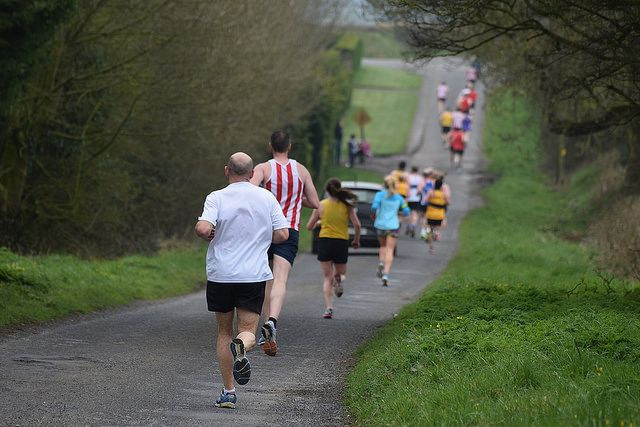Going For A Run May Induce The Growth Of New Brain Cells And Improve Long-Term Memory

We all know that regular exercise can boost brain function, reduce stress, and make you happy — but new research out of the Netherlands suggests it can specifically improve long-term memory.
The study, published in Brain Plasticity, found exercise can help an adult brain develop new cells through a process called adult neurogenesis. These newborn cells are crucial to both how we learn and how we form memories. Using mice, researchers found running on wheels doubled the number of newborn neurons through neurogenesis, which improved how well mice identified new objects from objects they were already familiar with.
"Our research indicates that exercise-induced increase in neurogenesis improves pattern separation by supporting unique and detailed long-term representations of similar but nevertheless different memory items," lead investigator Dr. Josef Bischofberger, a professor in the department of biomedicine at the University of Basel, Switzerland, said in a press release. "Pattern separation is involved in many memory tasks of everyday life. For example, when learning the game of chess, it is critically important to remember the different shapes of pieces like the pawn and bishop. Similarly, remembering the precise pattern of pieces on the board during a previously successful opening or endgame may decide who will win or lose."
Bischofberger and his team used two groups of mice for their experiment: one group was completely sedentary while the other voluntarily ran on a wheel. To test the effects this had on long-term memory, researchers used a novel object recognition (NOR) task. At first, the researchers put two identical objects into the cages of both groups of mice — either a black or white cone or pyramid. Researchers replaced either a cone with a pyramid or a pyramid with a cone an hour and a half later, looking on to see how mice reacted. Twenty-four hours after that researchers changed objects again, but with an object of the same color and different shape (black cone swapped for black pyramid) or vice versa (white cone for a black pyramid).
After the first hour and a half, both sedentary and active mice were able to pick out the similar objects from the different ones. However, running mice were better able to tell apart distinct- and similar looking-objects 24-hours later. The sedentary mice were only able to distinguish distinct objects, showing that exercise improved the ability to separate highly similar objects.
How could that be? Researchers looked into the brains of the mice and found running mice developed twice as many new brain cells than sedentary mice. Though the role of the new cells is still under investigation, the researchers assume their results complement prior findings, overall suggesting "the enhanced pattern separation during memory testing is most likely mediated via running-induced increase in adult neurogenesis."
Researchers conclude these findings fuel the idea exercise-induced "neurogenesis is a potential treatment for a variety of disorders that would benefit from improving cognitive capacity," such as Alzheimer's disease.
Source: Bischofberger J, et al. Running Improves Pattern Separation during Novel Object Recognition. Brain Plasticity. 2015.



























